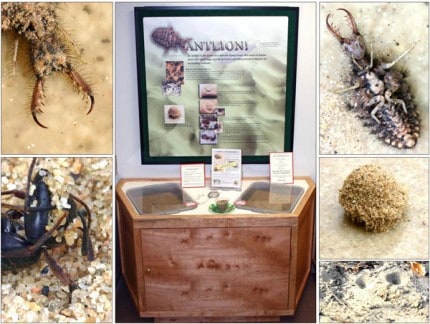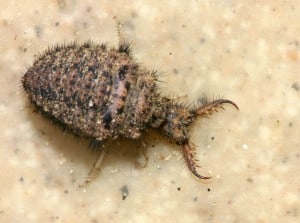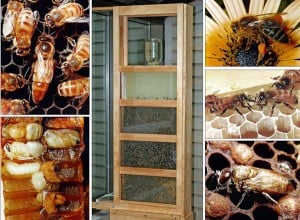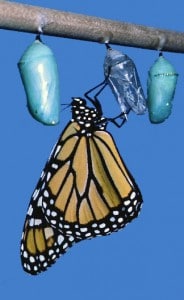

(Chelsea Update would like to thank Tom Hodgson and the Waterloo Natural History Association for the information and photos in this story.)
Summer is the time when all manner of critters are active in the Waterloo Recreation Area and the Discovery Center has some of the most interesting on display for all to see, including some of the most fascinating and colorful insects.

In the viewing room, the observation bee hive is bustling with activity. After swarming earlier in the summer, the hive has a brand new queen who is just beginning to lay eggs. Summer is the honey season, and the worker bees are returning from the fields, heavy with pollen and nectar. They are doing their “bee dances” to tell the other bees the location of the best flowers. All this nectar gathering is stimulating the bees to build new comb that is now glistening with honey. Here, visitors can get nose to nose (through the glass) with honey bees without fear of being stung.

In the critter room, ant-lions are waiting for visitors to feed them live ants collected from outside the building. They are hiding in cone-shaped pits they made in the sand boxes in the ant-lion exhibit. Each lies in wait at the bottom of a pit with only its pincers showing. When an unsuspecting ant falls in, WHAM! The ant-lion pounces, stabbing the ant with its hollow pincers and injecting it with digestive juices. The ant’s insides are turned into a buggy smoothie that the ant-lion sucks out through its hollow pincers. How wonderfully gross.
In the next exhibit, giant silk moth caterpillars are munching away on sassafras leaves. They will reach full size by the end of the summer when visitors can watch them spin their cocoons. The third exhibit may be the most interesting of all, however. Here monarch butterfly caterpillars of all sizes are feeding on milkweed kept fresh each week.

Some have already turned into beautiful emerald green chrysalids. In 10-to-12 days, these chrysalids will turn transparent to reveal the orange and black butterfly inside. Then, within 24 hours the adult butterfly will emerge. They emerge in the morning, harden their wings and are ready to fly in the afternoon. The Discovery Center staff release the butterflies just before closing (about 4:30 p.m.) each day. These butterflies will then begin their long journey to Mexico to spend the winter.
In addition to these “living life cycle” exhibits, there are several other live animals in the critter room including snakes, salamanders, and turtles. All of these exhibits will be available for viewing through the Labor Day weekend. The bees, of course, will continue their activities until the last fall wildflowers are done in late October. Then they will hunker down and feed on stored honey until next spring. By then the viewing room will become the place to see birds coming to the feeders outside.
So be sure to make the Discovery Center one of your places to visit before the summer is over. The whole family will enjoy it. The center is open from 10 a.m. to 5 p.m. Monday through Saturday and from noon to 5 p.m. on Sunday.











